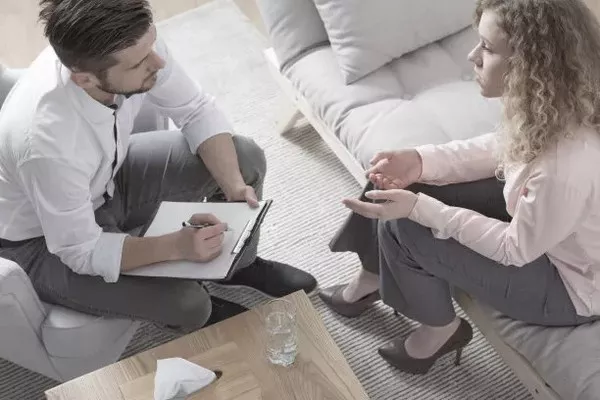Anxiety is a common experience that many people face at different points in their lives. While occasional anxiety is a natural response to stress and can even be beneficial in certain situations, chronic anxiety can be debilitating and interfere with daily functioning. As a psychologist, I’ve encountered numerous clients who struggle with anxiety, and I’ve seen firsthand how it can impact their lives. The good news is that anxiety can be managed effectively with the right strategies and support. In this article, we will explore the nature of anxiety, its causes, and a variety of evidence-based techniques to help you drive away anxiety and regain control over your life.
Understanding Anxiety
What Is Anxiety?
Anxiety is an emotional response characterized by feelings of tension, worried thoughts, and physical changes such as increased heart rate, sweating, and trembling. It is often accompanied by a sense of impending danger, panic, or doom, even in the absence of a specific threat. Anxiety can be a normal reaction to stress, but when it becomes excessive or chronic, it can lead to an anxiety disorder.
The Role of Anxiety in Our Lives
Anxiety is a natural part of the human experience and serves an important function. It acts as a warning system, alerting us to potential dangers and preparing us to respond effectively. This “fight or flight” response is crucial for survival, as it enables us to react quickly to threats. However, in modern society, where actual threats are less common, this response can be triggered by everyday stressors, leading to unnecessary and prolonged anxiety.
Types of Anxiety Disorders
There are several types of anxiety disorders, each with its own unique characteristics:
Generalized Anxiety Disorder (GAD): Characterized by chronic, excessive worry about various aspects of life, such as work, health, and relationships.
Panic Disorder: Involves sudden and repeated episodes of intense fear, often accompanied by physical symptoms like chest pain, shortness of breath, and dizziness.
Social Anxiety Disorder: Marked by an intense fear of social situations, leading to avoidance of social interactions and extreme self-consciousness.
Specific Phobias: Involves an irrational fear of specific objects or situations, such as heights, spiders, or flying.
Obsessive-Compulsive Disorder (OCD): Characterized by intrusive, unwanted thoughts (obsessions) and repetitive behaviors (compulsions) aimed at reducing anxiety.
Post-Traumatic Stress Disorder (PTSD): Develops after exposure to a traumatic event, leading to flashbacks, nightmares, and severe anxiety.
Understanding the type of anxiety disorder you may be experiencing is crucial for developing an effective treatment plan.
Causes of Anxiety
Biological Factors
Research suggests that genetics play a significant role in the development of anxiety disorders. Individuals with a family history of anxiety are more likely to experience anxiety themselves. Additionally, imbalances in brain chemicals, such as serotonin, norepinephrine, and gamma-aminobutyric acid (GABA), have been linked to anxiety.
Psychological Factors
Certain personality traits and cognitive patterns can contribute to the development of anxiety. For example, individuals who are prone to perfectionism, excessive worrying, or negative thinking may be more susceptible to anxiety. Additionally, early life experiences, such as trauma or prolonged stress, can shape how we perceive and respond to stressors later in life.
Environmental Factors
Environmental stressors, such as work pressure, financial difficulties, relationship problems, or major life changes, can trigger or exacerbate anxiety. Chronic exposure to stressful situations without adequate coping mechanisms can lead to the development of anxiety disorders.
Lifestyle Factors
Certain lifestyle choices can also contribute to anxiety. For instance, excessive caffeine or alcohol consumption, lack of sleep, poor diet, and a sedentary lifestyle can all increase the risk of anxiety. Conversely, healthy lifestyle habits can serve as protective factors against anxiety.
How to Drive Away Anxiety
1. Cognitive-Behavioral Therapy (CBT)
Understanding and Reshaping Your Thoughts
Cognitive-Behavioral Therapy (CBT) is one of the most effective forms of therapy for anxiety. It focuses on identifying and challenging negative thought patterns that contribute to anxiety and replacing them with more realistic and positive thoughts. CBT also involves behavioral strategies to help you confront and overcome fears.
How CBT Works:
Identifying Negative Thoughts: The first step in CBT is recognizing the negative thoughts that fuel your anxiety. These may include catastrophizing, overgeneralizing, or assuming the worst possible outcome.
Challenging Negative Thoughts: Once you’ve identified these thoughts, CBT helps you evaluate their accuracy and challenge them. For example, you might ask yourself, “Is this thought based on fact or fear?” or “What evidence do I have that supports or contradicts this thought?”
Replacing Negative Thoughts: After challenging the negative thoughts, CBT encourages you to replace them with more balanced and realistic thoughts. This shift in thinking can significantly reduce anxiety.
Exposure Therapy: CBT often involves gradual exposure to anxiety-provoking situations in a controlled and supportive environment. This helps you build confidence and reduce avoidance behaviors.
2. Mindfulness and Meditation
Staying Present and Reducing Stress
Mindfulness is the practice of paying attention to the present moment without judgment. It involves observing your thoughts, feelings, and bodily sensations with acceptance and without trying to change them. Mindfulness and meditation have been shown to reduce anxiety by promoting relaxation, improving focus, and increasing self-awareness.
How to Practice Mindfulness:
Mindful Breathing: Focus on your breath as it moves in and out of your body. Notice the sensation of the air entering your nostrils, filling your lungs, and leaving your body. When your mind wanders, gently bring your attention back to your breath.
Body Scan Meditation: This involves paying attention to different parts of your body, starting from your toes and moving up to your head. Notice any tension or discomfort and allow yourself to relax with each breath.
Mindful Observation: Choose an object in your environment, such as a flower or a piece of fruit, and observe it closely. Notice its color, texture, shape, and any other details without judgment.
Mindful Movement: Engage in activities like yoga, tai chi, or walking with full attention to your movements and bodily sensations. This can help you stay grounded in the present moment.
See Also: How Do I Survive a Job With Anxiety?
3. Relaxation Techniques
Calming Your Body and Mind
Relaxation techniques are essential tools for managing anxiety. These methods help reduce the physical symptoms of anxiety, such as muscle tension, rapid heartbeat, and shallow breathing. By calming your body, you can also calm your mind.
Effective Relaxation Techniques:
Deep Breathing: Practice deep, slow breathing by inhaling through your nose for a count of four, holding your breath for a count of four, and exhaling through your mouth for a count of four. Repeat several times.
Progressive Muscle Relaxation (PMR): This technique involves tensing and then relaxing different muscle groups in your body, starting from your toes and working your way up to your head. This helps release physical tension and promotes relaxation.
Guided Imagery: Close your eyes and imagine yourself in a peaceful, relaxing place, such as a beach, forest, or meadow. Use all your senses to create a vivid mental image and allow yourself to fully immerse in the scene.
Autogenic Training: This technique involves repeating phrases that promote relaxation, such as “My arms and legs feel heavy and warm” or “My heartbeat is calm and regular.” These phrases help induce a state of relaxation.
4. Physical Activity
Using Exercise to Combat Anxiety
Regular physical activity is one of the most effective ways to reduce anxiety. Exercise releases endorphins, which are natural mood boosters, and helps decrease stress hormones like cortisol. Additionally, exercise provides a healthy outlet for physical tension and nervous energy.
Incorporating Exercise into Your Routine:
Aerobic Exercise: Activities like running, cycling, swimming, or dancing can elevate your heart rate and improve your mood. Aim for at least 30 minutes of moderate aerobic exercise most days of the week.
Strength Training: Lifting weights or using resistance bands can also help reduce anxiety by building physical strength and increasing self-confidence.
Yoga: Yoga combines physical movement with breath control and mindfulness, making it a powerful tool for reducing anxiety. Many people find yoga to be particularly effective in promoting relaxation and mental clarity.
Outdoor Activities: Spending time in nature while engaging in activities like hiking, gardening, or walking can provide additional benefits by exposing you to fresh air and natural surroundings.
5. Healthy Lifestyle Habits
Supporting Your Mental Health Through Daily Choices
Your daily habits play a significant role in managing anxiety. By adopting a healthy lifestyle, you can create a foundation that supports your mental well-being and reduces the likelihood of anxiety.
Key Lifestyle Habits for Reducing Anxiety:
Balanced Diet: Eating a diet rich in whole foods, including fruits, vegetables, lean proteins, and whole grains, can help stabilize your mood and energy levels. Avoid excessive sugar, caffeine, and processed foods, which can contribute to anxiety.
Adequate Sleep: Aim for 7-9 hours of quality sleep each night. Establish a regular sleep schedule, create a relaxing bedtime routine, and make your sleep environment comfortable and conducive to rest.
Limiting Caffeine and Alcohol: While caffeine can increase alertness, it can also trigger anxiety in some people. Similarly, alcohol can temporarily reduce anxiety but may lead to increased anxiety later. Moderation is key.
Hydration: Drinking enough water throughout the day is essential for maintaining physical and mental well-being. Dehydration can lead to irritability, fatigue, and increased anxiety.
Social Support: Maintaining strong connections with friends, family, and loved ones can provide emotional support and reduce feelings of isolation. Make time for social activities and seek out supportive relationships.
6. Setting Boundaries and Managing Stress
Protecting Your Mental Health in a Busy World
Setting boundaries and managing stress are crucial for preventing and reducing anxiety. By learning to say no, delegating tasks, and prioritizing self-care, you can create a more balanced and manageable life.
Strategies for Managing Stress:
Time Management: Organize your day by prioritizing tasks, setting realistic goals, and breaking larger tasks into smaller, manageable steps. This can help reduce feelings of overwhelm and anxiety.
Assertive Communication: Learn to communicate your needs, preferences, and boundaries clearly and respectfully. Assertiveness can help you maintain control over your time and energy.
Taking Breaks: Regular breaks throughout the day can help you recharge and prevent burnout. Even a few minutes of deep breathing, stretching, or a short walk can make a significant difference.
Delegating Tasks: Don’t be afraid to ask for help or delegate tasks to others when necessary. Sharing responsibilities can alleviate some of the pressure and reduce anxiety.
7. Therapeutic Support
Seeking Professional Help When Needed
If your anxiety is severe or persistent, it may be beneficial to seek professional help. Psychotherapy, medication, or a combination of both can be effective in treating anxiety disorders.
When to Seek Professional Help:
Psychotherapy: Cognitive-Behavioral Therapy (CBT), as mentioned earlier, is highly effective for treating anxiety. Other therapeutic approaches, such as Acceptance and Commitment Therapy (ACT) and Dialectical Behavior Therapy (DBT), may also be beneficial.
Medication: In some cases, medication may be necessary to manage anxiety. Selective serotonin reuptake inhibitors (SSRIs),
benzodiazepines, and beta-blockers are commonly prescribed for anxiety. It’s important to work closely with a healthcare provider to determine the best treatment plan for you.
Support Groups: Joining a support group for individuals with anxiety can provide a sense of community and understanding. Sharing experiences and coping strategies with others who face similar challenges can be empowering and comforting.
8. Mindset and Attitude
Cultivating a Positive and Resilient Outlook
Your mindset and attitude toward anxiety can significantly impact how you experience and manage it. By cultivating a positive and resilient outlook, you can reduce the power anxiety has over your life.
Strategies for Cultivating a Resilient Mindset:
Acceptance: Accept that anxiety is a normal part of life and that it’s okay to feel anxious at times. Fighting anxiety often makes it worse, whereas acceptance allows you to move through it more easily.
Self-Compassion: Treat yourself with kindness and understanding when you’re feeling anxious. Avoid self-criticism and instead offer yourself the same support you would give to a friend.
Gratitude: Practicing gratitude can shift your focus from what’s wrong to what’s right in your life. Keeping a gratitude journal or taking time each day to reflect on things you’re thankful for can improve your mood and reduce anxiety.
Growth Mindset: View challenges and setbacks as opportunities for growth and learning. A growth mindset encourages resilience and adaptability in the face of adversity.
FAQs
1. Can anxiety go away on its own?
Anxiety can sometimes subside on its own, especially if it’s situational and related to a specific stressor that eventually resolves. However, chronic anxiety often requires active management and treatment to reduce its impact on daily life.
2. How long does it take to see results from anxiety treatment?
The timeline for seeing results from anxiety treatment varies depending on the individual, the type of treatment, and the severity of the anxiety. Some people may notice improvements within a few weeks, while others may take several months to experience significant relief.
3. Is medication the only solution for anxiety?
No, medication is not the only solution for anxiety. Many people manage anxiety effectively with therapy, lifestyle changes, and self-help strategies. Medication can be helpful for some individuals, particularly those with severe anxiety, but it’s not always necessary.
4. How can I help a loved one who is struggling with anxiety?
Supporting a loved one with anxiety involves being patient, understanding, and non-judgmental. Encourage them to seek professional help if needed, and offer to accompany them to appointments or support them in practicing self-care strategies. Avoid minimizing their anxiety or pressuring them to “just relax.”
5. Can anxiety be cured completely?
While anxiety may not be “cured” in the traditional sense, it can be managed effectively to the point where it no longer significantly impacts your life. With the right treatment and strategies, many people with anxiety lead fulfilling and peaceful lives.
Conclusion
Driving away anxiety is a journey that requires patience, persistence, and self-compassion. By understanding the nature of anxiety, identifying the factors that contribute to it, and applying evidence-based strategies, you can regain control over your life and reduce the impact of anxiety. Remember that you don’t have to go through this journey alone—seeking professional help and leaning on your support system can make all the difference. With time and effort, you can cultivate a sense of peace, resilience, and well-being.
Related topics:



























